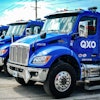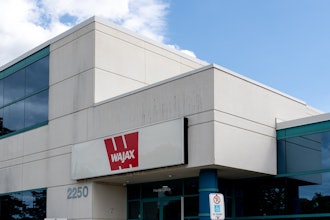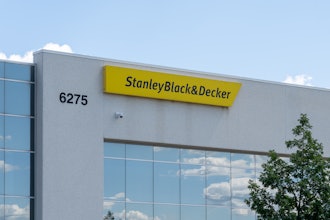Grainger — No. 3 on Industrial Distribution's 2015 Big 50 List — reported its 2016 second quarter financials on Tuesday, highlighted by a slight year-over-year sales gain while profit continued a considerable tumble.
The Lake Forest, IL-based company posted Q2 sales of $2.6 billion, up 2 percent from a year ago, helped by a 4 percentage point gain from Grainger's September 2015 acquisition of Cromwell. Without that acquisition, organic sales declined 2 percent in Q2, driven by a 1-point decline in volume and a 1-point reduction in price. Sequentially, Q2 sales were up 4 percent from Q1.
Grainger posted a Q2 profit of $173 million, down 22 percent year-over-year and down 7.5 percent from Q1. Operating profit of $306 million was down 14 percent a year earlier. Grainger said the decline was driven by lower sales, lower gross profit margins and higher operating expenses.
"Grainger and our industry remain challenged by the difficult industrial environment," said Grainger CEO Jim Ryan. "The U.S. business performed slightly below our expectations due to lower sales volume that was partially offset by better than expected gross profit margins."
Here are some notable facts reported by Grainger Tuesday:
- Grainger closed 27 U.S. branches in Q2 and opened one, fitting its previously announced plan to re-adjust its U.S. branch network that included closing 55 branches. The company closed only five branches in Q1. As of June 30, Grainger has 300 U.S. branches and 19 distribution centers. It has 165 branches and 5 distribution centers in Canada.
- The company said that e-commerce represented 46 percent of sales in the first half of 2016, up from 40 percent at this point a year ago.
- Grainger launched a new inside sales team in Q2, consisting of 275 representatives calling on its medium-sized customers.
- Grainger had unallocated expenses of $45 million in Q2, up 22 percent from a year ago. The increase was driven by a $9 million write-down of a corporate aircraft the company plans to sell in connection with outsourcing its aviation department.
Grainger's U.S. sales declined 3 percent in Q2, driven by a 2-point volume decrease and a 2-point decline in price, offset by a 1-point gain from increased sales to its Zoro online channel. Operating profit in the U.S. declined 6 percent from a year ago. Operating expenses declined 4 percent.
Here's how Grainger's Q2 U.S. sales fared by end market:
- Government and Retail — up in the low single digits
- Light Manufacturing — flat
- Commercial — down in the low single digits
- Heavy Manufacturing — down in the mid-single digits
- Contractor — down in the high single digit
- Natural Resources and Reseller — down in the mid-teens
Grainger's Q2 Canada sales declined 19 percent in U.S. dollars and 16 percent in local currency. The 16 percent drop included 14 points from lower volume and 2 points from the Alberta wildfires. The company said its Canadian business continued to be affected by a weak economic environment. Daily sales in Alberta, which comprised about one-third of overall Canada sales, declined 28 percent, while sales in all other provinces declined 11 percent. Overall, Grainger's Canada business posted a $28 million operating loss in Q2 compared to a $9 million profit a year earler.
Grainger's Other Businesses segment posted a 49 percent sales increase in Q2 over a year earlier, consisting of 31 points from Cromwell, 17 points from volume and price and a 1-point benefit from foreign exchange. The segment's single channel online business had 34 percent daily sales growth. Operating profit of $30 million was up 96 percent over last year.
By month in Q2, sales growth was as follows:
April — +4 percent; May — +1 percent; June — flat. That follows Q1 that showed January — +4.3 percent; February — +0.6 percent and March — -1.1 percent.
Year-to-date Grainger overall sales of $5.1 billion were up 2 percent from a year earlier, while net profit of $359 million was down 17 percent.
After forecasting full year sales growth of 0 to 6 percent after Q1, Grainger has narrowed its guidance to 1 to 4 percent growth.






















